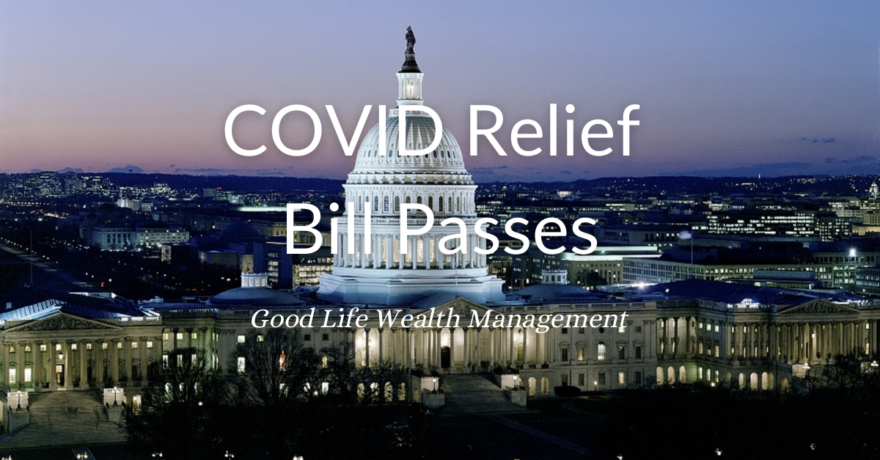In recent weeks, people have become more concerned about the possibility of inflation and its impact on Real Estate. This is a complex subject, but certainly important for your financial security. With interest rates near historic lows, now is a great time to get a 15 or 30 year mortgage. And with the possibility of inflation increasing, buying a home now could lock in both today’s real estate prices and interest rates.
Globally, governments are spending at an unprecedented rate, taking on vast amounts of debt. According to the US Debt Clock, we presently owe over $224,000 per US taxpayer. Will we ever repay this debt? There’s no appetite for austerity – reducing spending – or raising taxes to payoff the debt. No, we will need to inflate our way out of debt. With 3% inflation, $1,000 in debt will “feel like” only $912 in three years. Ask someone who borrowed $250,000 twenty years ago for a house. It probably felt like a huge amount at the time, but became easier to pay over the years.
For people who don’t have a house, there is a real fear of missing out. Many are concerned that if they don’t buy right now, real estate prices may soon rise to the point where they can no longer afford a house. In densely populated parts of the country, many people are already priced out of the market. People from California, New York, Seattle, etc. are moving to Dallas, Austin, Nashville, or other places in search of better real estate prices and lower taxes.
I bought a house in January and moved to Little Rock, which is even more affordable than Dallas. We are really enjoying our new neighborhood and city. When you work from home, it’s important to have a place you love. So, I understand the feelings people are having about inflation and real estate today. Here’s my advice to first time homebuyers and to people consider their house as an investment.
Buy Versus Rent
I do think now is a great time to buy a house – at least in theory! Owning can make financial sense versus renting, but primarily with two considerations:
- The longer you stay in the house, the better. It takes a long time to really benefit from the impact of inflation on real estate. If you stay in the house less than five years, you may only break even, after you pay realtor fees and closing costs.
- Your house is still an expense. There are taxes, insurance, mortgage interest, maintenance, furnishings, etc. When I see people stretch for the most expensive house they can afford, it often means they are unable to save as much in their other accounts. Twenty years later, they have only a small 401(k). Meanwhile, their colleagues who maxed out their 401(k)s could have a million dollar nest egg.
So, if you are ready to put down roots, yes, buy a house now. However, I have a feeling that we may see these low interest rates for a while longer. If the time isn’t right for you personally, then wait. If your career may take you to another location, then wait. Growing family? Get a house you can keep and not out grow. I do think you will have plenty of chances to get in real estate in the future. Renting is not only fine, it may even allow you to grow your net worth when you invest your savings versus owning. Renting provides flexibility and fixed costs, versus the surprise expenses that come with having a home. If anything, we need to remove the stigma from renting that it is somehow a barrier to financial success.
Your House is Not an Investment
If Real Estate is such a good inflation hedge, then it would make sense for everyone to buy a million dollar mansion and get rich off their home, right? Should you buy the most expensive house you can afford? Let’s consider this carefully.
Increasing house prices is not the same as an investment return. To measure inflation of real estate, many people refer to the Case-Shiller Home Price Index. It is great data, but flawed if you are trying to use it for an investment rationale. It simply measures the selling price of a house compared to that house’s previous sale. That’s what your return would be as a homeowner, right? No, the homeowner makes much, much less.
While the Index shows what it costs to buy a house, it does not reflect the return to owners. The index does not include: transaction costs (6% realtor commissions are egregious today, really), ongoing expenses (property taxes, insurance, etc.), or improvements. Taxes and Insurance can run 2.5% to 3% a year. Someone who puts in $100,000 in renovations to a house and adds two rooms? Case-Shiller doesn’t consider any of these costs that may occur between sales of a house.
As of 12/31/2020, the Case-Shiller 20-City Composite shows a 10-year price increase of 5.39%. That’s impressive, but that’s not the net return to home owners. So, let’s not think this data is saying that a house is the same as a mutual fund that returned 5.39% over the past 10 years. (By the way, over that same 10 year period, an investment in the Vanguard 500 ETF (VOO) had a return of 13.84%.) Past performance is no guarantee of future results, but I just want people to understand that comparing the Case-Shiller index to an investment return is flawed and not the purpose of that data.
Remodels and Affordability
Planning to remodel? That’s fine to enjoy your home, improve its usability, and to save you from having to move. However, is it a good investment? According to Remodeling Magazine’s 2020 National Data, no type of remodeling recouped 100% of its cost. The top 10 types of remodels recouped 66.8% to 95.6% as a National Average. It’s fine to improve and update your home, but let’s not try to rationalize that decision by thinking that we are making a great investment. The data suggests this is unlikely.
Home affordability: House prices are based on supply and demand. Demand depends on affordability. With years of slow home building, the supply of houses is tight – at least in states with population growth. In areas of population decline, there may be an oversupply. When there are more buyers than sellers, prices rise. In the long run, however, house prices reflect what people can afford.
We’ve had thirty years of falling interest rates. I think my parents’ first mortgage was at 16%. Today, that would be under 3%. That’s one reason why home prices have grown so much. Affordability isn’t based on the home selling price, it’s based on the monthly payment. And since mortgage eligibility is based on your debt to income ratio, home prices cannot increase faster than income in the long run, without falling interest rates. So, I don’t think we are going to see house prices going up by 10% every year if wages only increase by 2%. Who will be the buyers?
Taxes and Investing
It used to be that home ownership came with a nice tax break. That’s no longer the case. I know it seems unfair, but economists finally got through to Washington that the tax benefits were disproportionally helping the ultra wealthy and not the average home owner. For 2021, the standard deduction for a married couple is $25,100. Very few people will itemize. Your itemized deductions include mortgage interest, state and local taxes (with a cap of $10,000), and charitable donations. You probably will not have more than $25,100 in these deductions. That means that you are getting zero tax benefit for your home’s taxes and interest, compared to being a renter. In 2017, I wrote about this change: Home Tax Deductions: Overrated and Getting Worse.
Don’t think of your home as an investment, but as a cost. It’s probably your largest cost. Treat it as a expense to be managed. Your ability to save in a 401(k), IRA, HSA, 529 Plan, Brokerage Account, etc., depends on your preserving the cash flow to fund those accounts. Buy the most expensive house you can and you will be house rich and cash poor. I don’t think that there will be enough inflation in real estate to make that a winning bet.
Your home equity is part of your net worth, but at best consider it like a bond. In spite of today’s inflation concerns and fear of missing out, your home is not likely to make you rich. I remain a fan of the 15-year mortgage and find that my wealthiest clients usually want to be debt-free rather than use leverage to get the biggest house possible. Read: The 15-Year Mortgage, Myth and Reality. Even as home prices increase, please recognize that inflation in real estate is higher than your return on investment once you include all the costs of ownership.
Thinking Long Term
If you are ready to buy a home, now may be a good time. Low interest rates and rising home prices are going to help you. Buying can build your net worth versus renting, if you are ready to stay in one place. Think of your house as an expense and not an investment, and you will enjoy it more and have realistic expectations. Real estate and inflation are linked, but hopefully you now realize that home prices do not equate to return on investment. Build your wealth elsewhere – through investing, creating a business, and growing your career and earnings.
Don’t be afraid of missing out, supply will catch up to demand eventually. And the rise of remote working in the past year means that more people can work from anywhere. People can move to the location they want and can afford. This will help equalize prices nationally, as more workers move from high-cost areas to places with better value.
Low interest rates should cause inflation to pick up. This is government planned financial repression, and it will penalize savers, like grandparents who want to just park their money in CDs. Those will be Certificates of Depreciation – guaranteed to not maintain their purchasing power and keep up with inflation. Low interest rates will benefit debtors, especially when that debt is used to buy appreciating assets and not depreciating things, like cars. Use leverage wisely and it can help grow your net worth. Financial planning is more than just investments, and my goal is to help you succeed in defining and creating your own version of The Good Life.













